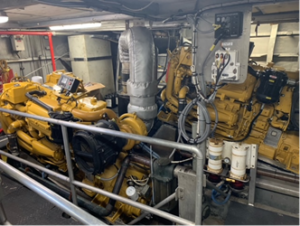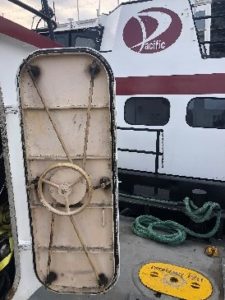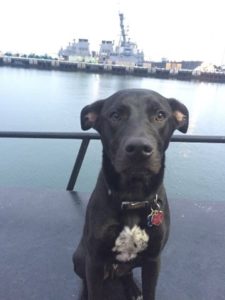Cats and Dogs and Camels, oh my!

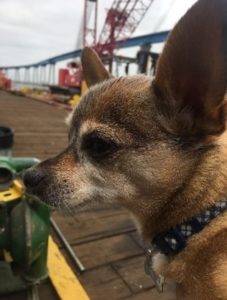 Cats in the engine room, dogs everywhere, and camels in the water? And what about that Brass Monkey? Is this Blog about Tugboats or Creatures? Nautical terminology is like a second language just for mariners. Ask a green deckhand to “Dog the hatch” and you might get a blank stare.
Cats in the engine room, dogs everywhere, and camels in the water? And what about that Brass Monkey? Is this Blog about Tugboats or Creatures? Nautical terminology is like a second language just for mariners. Ask a green deckhand to “Dog the hatch” and you might get a blank stare.
Pacific Maritime Group is home to all sorts of mechanical “animals” and some of the real ones too. You could say we are Animal Lovers!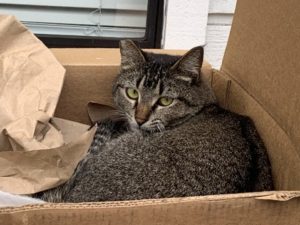
Sylvester and Luna came to us as feral rescue cats. Luna was terrified and Sylvester was wary. Their first months were spent hiding during the day and prowling at night. Sylvester was the first to make friends with our Crew Members. He is a talker and he learned to insistently meow until you would give him a treat. Luna caught on over time. Our crew is now well trained!
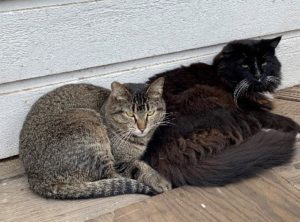 Today, this pair is part of everyday life on the Pier. They run to greet their favorite Crew Members when they arrive and find the exact spot to lounge in that is right in the way of everything. They do have important work to do as Vector Control Managers. There is no greater image of pride, than Sylvester displaying his daily catch for all to praise and envy.
Today, this pair is part of everyday life on the Pier. They run to greet their favorite Crew Members when they arrive and find the exact spot to lounge in that is right in the way of everything. They do have important work to do as Vector Control Managers. There is no greater image of pride, than Sylvester displaying his daily catch for all to praise and envy.
We have some great big Cats too.
Of course, these would be the legendary Caterpillar diesel engines in some of our Tug Boats, Crew Boats, Landing Craft, Floating Cranes, Dredges and Marine Equipment. “Cats” as they are affectionately known are one of several brands of marine engines that are at the heart of our vessels.
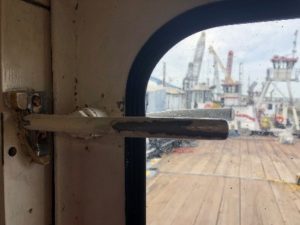
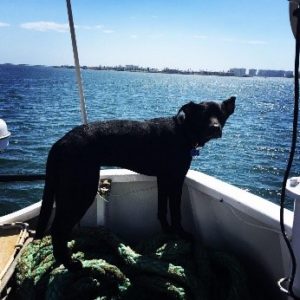

Their job is to keep the ships from rubbing on the piers, or each other. Marine Camels can be long and skinny, short and fat, even square or rectangular. Some just barely peek above the water, but have a lot going on below. Very few have humps, sorry to say.
The type of Camel to the right is used to keep nuclear submarines from bumping against the pier or another submarine alongside.
The orange part is above the surface when it is floating, all the rest is below, where it is most effective.
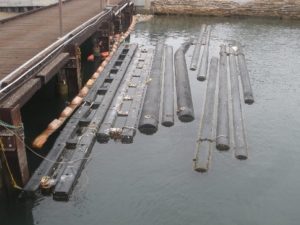
Aircraft Carriers need Camels too. The large flat flight deck extends well beyond the sides of ship, especially the starboard side, which typically moors to the pier. A very wide and sturdy pair of custom designed floating camels is required for each Carrier. In 2000, Pacific Maritime Group was tasked with designing and building two Aircraft Carrier Separators in a very brief thirty-day period. It was the company’s first direct government contract and very important for the Navy, because they had a carrier in-bound and no Separators. On the 29th day, everyone was happy when a shiny new set showed up on base and the next day the USS Constitution made her grand entrance. The humble Marine Camel may be the underdog of the Marine Animal kingdom!
Now for the famous Brass Monkey. Sailor’s lore has it that when the old wooden ships of war went to sea, their supply of cannonballs stacked one on top, then four, then nine, and finally sixteen at the bottom to form the base. To keep the pyramid in place, and all the balls from rolling around helter-skelter, a metal base called a “Monkey” with sixteen round dents was secured to the deck close-by the cannons. Since iron rusts, the plate was made of brass. Well, brass contracts more than the steel cannonballs in cold weather, so the brass indentations would shrink, and the cannon balls would roll off the monkey. Freezing weather ever since been famously referred to as “Cold enough to freeze the balls off a brass monkey”. Thankfully, our tugs have heaters, and we rarely need cannons, so our Monkeys and balls are warm and safe.
Oh, and the last thing you want to do on a ship is get hit by Monkey’s Fist! But that is a story for another time…

